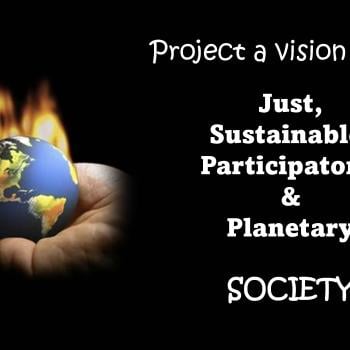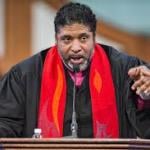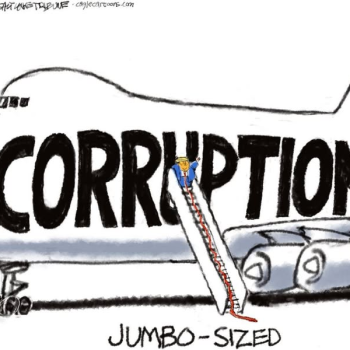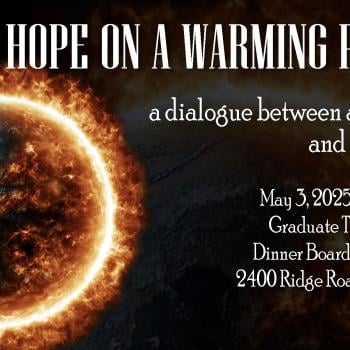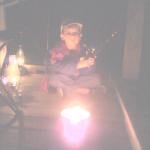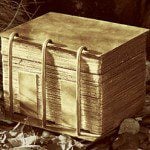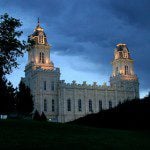Communication with the Dead
It was the evening following my mother’s funeral. My only brother, Rob, and I sat in his kitchen sipping freshly brewed coffee. We were grieving together. We missed our mother deeply. “Oh, how I wish she would communicate with us,” I murmured. “I really want to know that she’s Okay.”
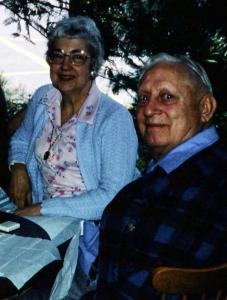
As a scholar, I could and did speculate. “In many archaic traditions,” I expostulated, “the ghost of the deceased remains in the vicinity for three days before finally departing.” Brother Rob listened with hopeful expectation in his eyes.
“Talk to us, Mom!” he said.
At that moment, the ceiling lights in the kitchen, hallway, and living room flickered. Repeatedly flickered.
“It’s Mom!” my brother exclaimed. Now, I need to mention that both my brother and father were deep into electronics. If it’s an electric gadget, they’d love it. So, should my mother wish to touch Rob’s heart, something electrical would provide just the right medium. Flickering lights provided just that medium.
Then, the house phone rang. Rob raced to pick it up. No one was on the other end. It rang again. Rob picked up a second time. Same response. After the fourth ring or so, the pattern stopped.
Rob’s glowing face showed comfort, even joy. “She’s just fine, Frank.” My brother called me Frank. I’m Ted to everyone else.
“I think it could’ve just been a coincidence,” I said skeptically.
“No, Frank, it was her!”
Communication with the Dead? Really?
Our subject in this Patheos blog article is this: communication with the dead.
“People might report seeing or hearing a deceased person…People may also interpret many types of natural events as indirect messages from a departed person, like animal encounters, electrical activity, or weather events such as storms or rainbows….psychologists are trained to examine people’s personal beliefs and experiences without addressing the supernatural themselves” (T. G.-F. Plante 2023).
Thus speaketh Thomas G. Plante and Gary E. Schwartz along with a group of psychologists who want to scientize and empiricize the necromancy phenomenon.
Now I ask: was my brother Rob deluded? Hallucinating? Well, er, ah, we can’t judge. The scientific researchers would simply suspend judgment on that question. Psychologists only study the processes of believing. They do not ask whether the beliefs are true or not. “We are not engaged in a debate about reality” (T. G.-F. Plante 2023). That’s what I like: scientists who avoid engaging with reality.
Communication with the Dead through EVP
Electronic Voice Phenomena or EVP has become the means of choice for some of our deceased loved ones to talk with us. EVP “are heard as voices and bits of speech hidden among the background noise and static from audio recordings, radios, televisions, and other devices. Ghost hunters claim that such itnerference is created (or modified) by spirits trying to speak to us from the afterlife” (Radford, 2023, 32).
Skeptics and reductionists spoil the fun by providing a prosaic explanation, namely, apophenia. Apophenia “causes people to hear distinct sounds in random white noise patterns such as the background static in an audio recording. If a ghost hunter is epecting (or hoping) to hear words or phrases in faith sounds–especially in the context of a haunting–he or she just might”(Radford, 2023, 32). Now, does this count as an empirical explanation? Or, is it merely an alternative description that requires no empirical research?
Well, as is obvious from my story about my deceased mother, certainly my brother and I were “expecting (or hoping).” And this certainly affected our response to otherwise ambiguous electrical phenomena.
Has our era become one in which we expect if not hope for digital communication with the dead?
Communication with the Dead through a Digital Memorial
Never Gone offers a website that includes photos, stories, guest books, tributes, virtual candles, and a number of personalization options and backgrounds.
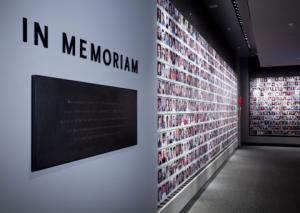
Memorial pages at another company, Memorial Source, include an unlimited amount of text to tell your loved one’s story, a photo gallery, a memory wall where others can leave messages and photos, and a section for listing memorial service details. Premium plans ensure the page is active on an ongoing or lifetime basis and feature unlimited photos and multiple page administrators.
Through digital memorials, Social Network Site (SNS) and Online support networks (OSN) have been providing support for the bereaved for nearly three decades now.[1] You may post a message or messages to the deceased on his or her SNS, and make regular visits on particular holidays, such as the birthday of the deceased or on the anniversary of the person’s death.
Of the many funeral and memorial digital services available, how many provide a channel for our communication with the dead? You certainly can send a message to your deceased Aunt Edna. But, will Aunt Edna send one to you in return?
Channeling the Ghost of Albert Einstein
During the period when I was making a study of New Age Spirituality leading to the book I published with Harper, The Cosmic Self, I interviewed a number of channelers. I met a radio personality, a medium, who channeled both recently deceased relatives of her radio listeners as well as historical figures such as Jesus and Albert Einstein. I invited her to my class in Berkeley so my students could ask her questions about communication with the dead.
Now, I must confess. I cheated. Within the class I planted two professors, one physicist and one psychologist. Along with students, these planted faculty would ask questions of the channeler.
The time came to interview Albert Einstein. The channeler went into a momentary trance and announced she was ready.
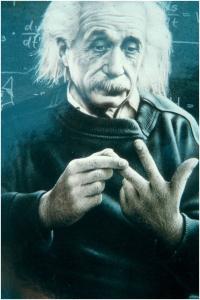
“Am I now talking to Albert Einstein?” asked my physicist colleague, Robert John Russell. Let’s call him Bob.
“Yes, you are,” answered Einstein in the voice of the channeler. A brief discourse followed with niceties in which the famous Einstein recalled some widely known personal factoids. Einstein even mentioned E=mc2.
“Doctor Einstein,” said Bob respectfully, “do you recall the death of your close friend, George Besso?”
“Oh, yes,” answered Einstein. “That was a sad event.”
Bob continued. “Do you recall writing a touching letter of condolence to George Besso’s sister? Let me quote one line from that letter.
‘Michele has left this strange world a little before me. This means nothing. People like us, who believe in physics, know that the distinction made between past, present and future is nothing more than a persistent, stubborn illusion.’
Did you actually say that?”
“Yes, I certainly wrote that,” responded Einstein. “I thought my concept of time might comfort George’s sister. It was my way of saying that her brother is not really gone after all.”
I will spare you, the reader, any further account of that conversation or the interchange with my other colleague.
What happened at the next class meeting is decisive. I invited both Bob and the other professor to return to class. The channeler was not invited back. I asked my two faculty colleagues to share with the students what they had observed. They had much to say. But one item is relevant here.
“Professor Russell,” I asked, “are you convinced that you were actually talking with the deceased Albert Einstein?”
“No, I was not talking to Einstein,” he declared flatly.
“How do you know?
“Recall I asked Einstein about the sad death of one of his close and longtime friends, George Besso. However, the friend’s name was Michele Besso, not George. Einstein himself along with every Einstein scholar would know that the name was Michele. The channeler did not. I conclude that she is a fake.” What appeared to be startling turned out to be brummagem.
The Bible and Necromancy
What does the Bible say about communication with the dead, otherwise dubbed necromancy? Let’s return to the Old Testament and King Saul talking to the dead prophet, Samuel.
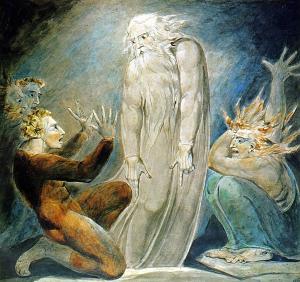
The beleaguered King Saul, despondent over his loss of charism that resulted in losing military battles to the Philistines, sought consolation by speaking with the already deceased prophet, Samuel. The king contracted with the Witch of Endor. The Endor medium was a competent channeler. She called up the ghost of the dead prophet. The awakened Samuel grumbled at being awakened from his postmortem rest. Yet, the conversation took place.
Samuel delivered to Saul some disheartening news. “The Lord will give Israel along with you into the hands of the Philistines; and tomorrow you and your sons shall be with me; the Lord will also give the army of Israel into the hands of the Philistines” (1 Samuel 28:19).
Despite this story, the Bible does not approve of witches, mediums, channelers, or any form of necromancy.
“Do not turn to mediums or necromancers; do not seek them out, and so make yourselves unclean by them: I am the Lord your God” (Leviticus 19:31).
In principle, according contemporary theologians such as Roman Catholic Karl Rahner, when yere dead yer dead. “Death marks an end for the whole person” (Rahner 1978, 271). If what Rahner says is correct, then it would be impossible for my mother to communicate with me postmortem. It would be impossible for King Saul to communicate with the deceased prophet, Samuel.
Test the Spirits
One Patheos columnist, Mishael Austin Witty, asks whether ghosts are real or not. Then, she warns us to be cautious. Why? Because what appear to be ghosts may very well be demons. My own counsel is to avoid jumping to conclusions. Test the spirits. “Do not believe every spirit, but test the spirits to see whether they are from God” (1 John 4:1).
Scripture and Experience
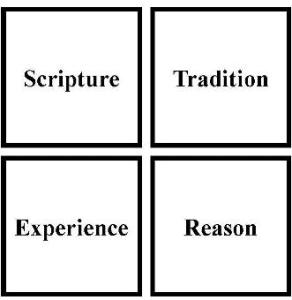
For those of you who are Methodists, you might recall the Wesleyan Quadrilateral. The four sources for Christian theology include: Scripture, Tradition, Reason, and Experience. Two types of experience count. One is supranatural experience such as glossolalia. The second is empirical experience, the kind that scientists rely on.
What happens when experience fails to cohere with what Scripture says? Ouch! One easy solution is to simply assert that Scripture trumps experience. Believe the Bible, ignore your experience! But, sometimes this is less than satisfying.
Indirectly, our psychologists tell us that what we experience as communications from the dead are ambiguous. Such things as electrical anomalies or rainbows and such are ambiguous. We can interpret them as messages or as merely natural coincidences.
But, then again, this is generally the case when God talks to us. Even God’s revelation in Jesus’ miracles were ambiguous. Some witnesses believed what the saw to be a divine revelation. Others, seeing the same miracle, disregarded it as a trick or something.
Lutherans believe that God works in the physical world “in, with, and under” natural elements and processes. Yes, the bread and wine in the Eucharist feel and taste like bread and wine. Even so, “in, with, and under” the bread and wine we believe the body and blood of Jesus Christ are truly present.
In short, ambiguity is something Christians live with daily.
Ambiguity and Experience
So, how do we know if something natural conveys a supranatural message or not? Answer: stop separating them. Both could be present simultaneously. The eyes of faith see what skeptics are blind to.
The hermeneutical philosophers remind us that no human experience is uninterpreted experience. My brother Rob’s experience was that of recognizing my mother’s heartfelt message in electrical anomalies. My experience included my skepticism. I wanted to believe it was mom but was kept from believing by my skepticism. Two persons. Two experiences. Which one has the better purchase on reality?
I won’t ask my psychologist colleagues to tell me which experience was real. After all, psychologists don’t engage with reality.
What’s next in our treatment of the afterlife?
Here’s where we have been and where we are going.
- The Denial of Death
- Naturalism: When yer dead yer dead!
- Astral Body? Ka? Or Angel?
- Third Day Afterlife
- Immortal Soul
- Reincarnation
- Near Death Experience
- Communication with the Dead (Necromancy)
- Absorption into the Mystical Infinite
- Resurrection of the Body
- Heaven
- Hell
- Purgatory
Conclusion
After all, doubt is part of faith. “Serious doubt is confirmation of faith. It indicates the seriousness of the concern, its unconditional character” (Tillich 1957, 22), says Paul Tillich.
One of my seminary professors, church historian Fred Meuser, left me with a maxim. “Doubt first your doubt. Then, doubt your faith.”
So, if your mother calls your name from either this side of the other side of the grave, I recommend you respond: “yes, Mom!”
ST 4118. Communication with the dead. Afterlife 8
▓
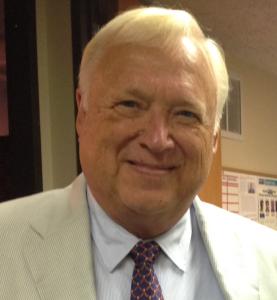
Ted Peters is a Lutheran pastor and emeritus professor at the Graduate Theological Union. He co-edits the journal, Theology and Science, with Robert John Russell on behalf of the Center for Theology and the Natural Sciences, in Berkeley, California, USA. His single volume systematic theology, God—The World’s Future, is now in the 3rd edition. He has also authored God as Trinity plus Sin: Radical Evil in Soul and Society as well as Sin Boldly: Justifying Faith for Fragile and Broken Souls. See his website: TedsTimelyTake.com.
He has just published a new 2023 book, The Voice of Public Theology, with ATF Press.
▓
Notes
[1] “The audience of OSN [Online Support Networks] memorials is thus quite different than either funeral industry or SNS [Social Network Site] digital memorials in that the OSN memorials function as communal mourning and grieving sites, as well as political and educational platforms” (Cann 2018).Bibliography
Cann, Candi. “Digital memorials.” In Routledge Handbook to Death and Dying, by ed Christopher Moreman, Chapter 29. London: Routledge, 2018.
Peters, Ted. The Cosmic Self: A Penetrating Look at Today’s New Age Movements . New York: Harper, 1991.
Plante, Thomas, and Gary Schwartz. “Introduction.” In Human Interaction with the Divine, the Sacred, and the Deceased, by eds Thomas Plante and Gary Schwartz. London : Routledge, 2023.
Plante, Thomas, Gary Schwartz, Julie Exline, Crystal Park, Raymond Paloutzian, Rudiger Seitz, Hans-Ferdinand Angel. “Human interaction with the divine, the sacred, and the deceased: topics that warrant increased attention by psychologists.” Curret Psychology, 2023: https://doi.org/10.1007/s12144-022-04226-0.
Radford, Benjamin, 2023. “Examining Sciencey EVP Research,” Skeptical Inquirer 47:2 (March/April) 32-34.
Rahner, Karl. Foundations of the Christian Faith. New York: Seabury Crossroad, 1978.
Tillich, Paul. Dynamics of Faith. New York: Harper, 1957.





